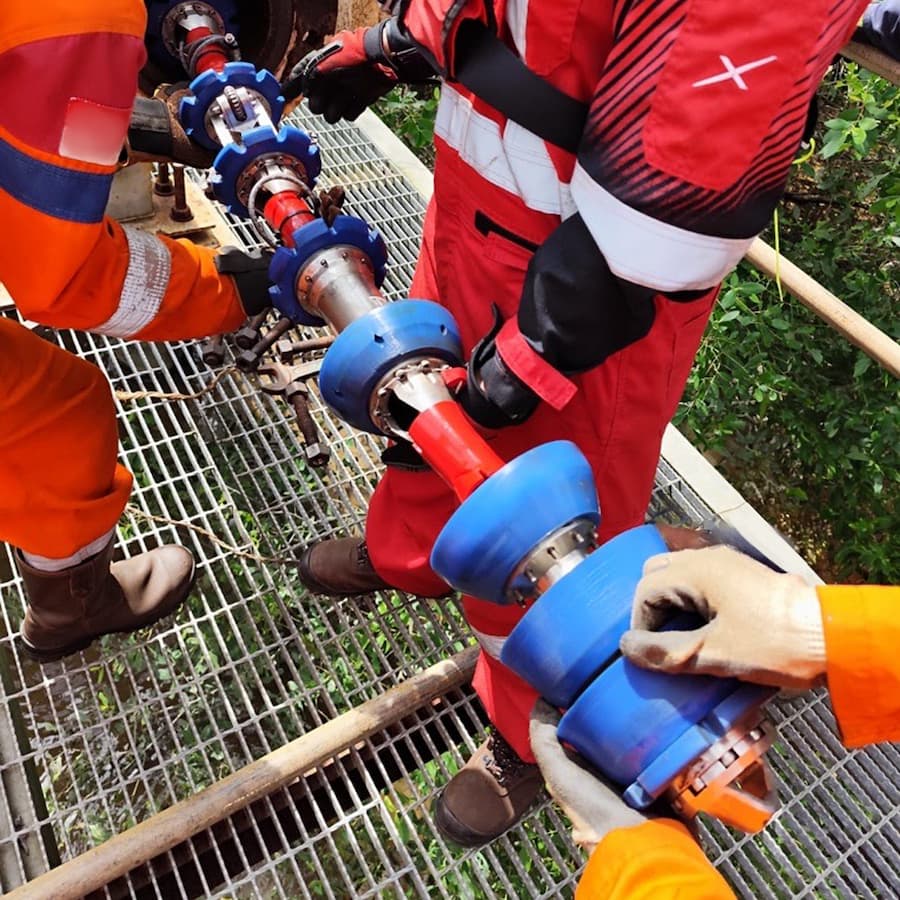A major Southeast Asian energy company tasked Dexon with inspecting a series of natural gas wellhead pipelines that carry raw gas from wells to a nearby processing platform.
These short, shallow-water lines face two big threats: geometric defects from currents and unstable supports, and corrosion from the salty, oxygen-rich environment.
Given the scope, Dexon sent a single inspector to oversee the project, deploying a caliper tool for geometric defects and our UT-MC tool for corrosion.
But, as any inspector knows, even simple pipelines have a way of becoming complicated.
Challenge 1: A Fussy Skillet
The operator’s skillet — a metal plate used to block flow between pipelines (not a pan used to fry eggs) — was allowing air into the seawater-filled line.
Since the air bubbles disrupt ultrasonic readings, our inspector noticed the irregularities in the line and quickly intervened.
He informed the line’s staff to shut the skillet completely before it could compromise the run.
Challenge 2: Staff Unfamiliar with ILI
Because in-line inspections happen infrequently, many staff had forgotten the protocols, while many were not around when the last inspection happened.
At every site, our inspector clearly briefed the supporting team, distributed simple guidelines, and maintained close communication throughout the process to keep everything on track.
The Result
Nearly a dozen inspections completed so far — with more added thanks to the operator’s confidence in our work.
Clear communication, close monitoring, and adaptability allowed Dexon and the operator to anticipate and prevent challenges that could have compromised the run.

 Dexon Technology
Dexon Technology